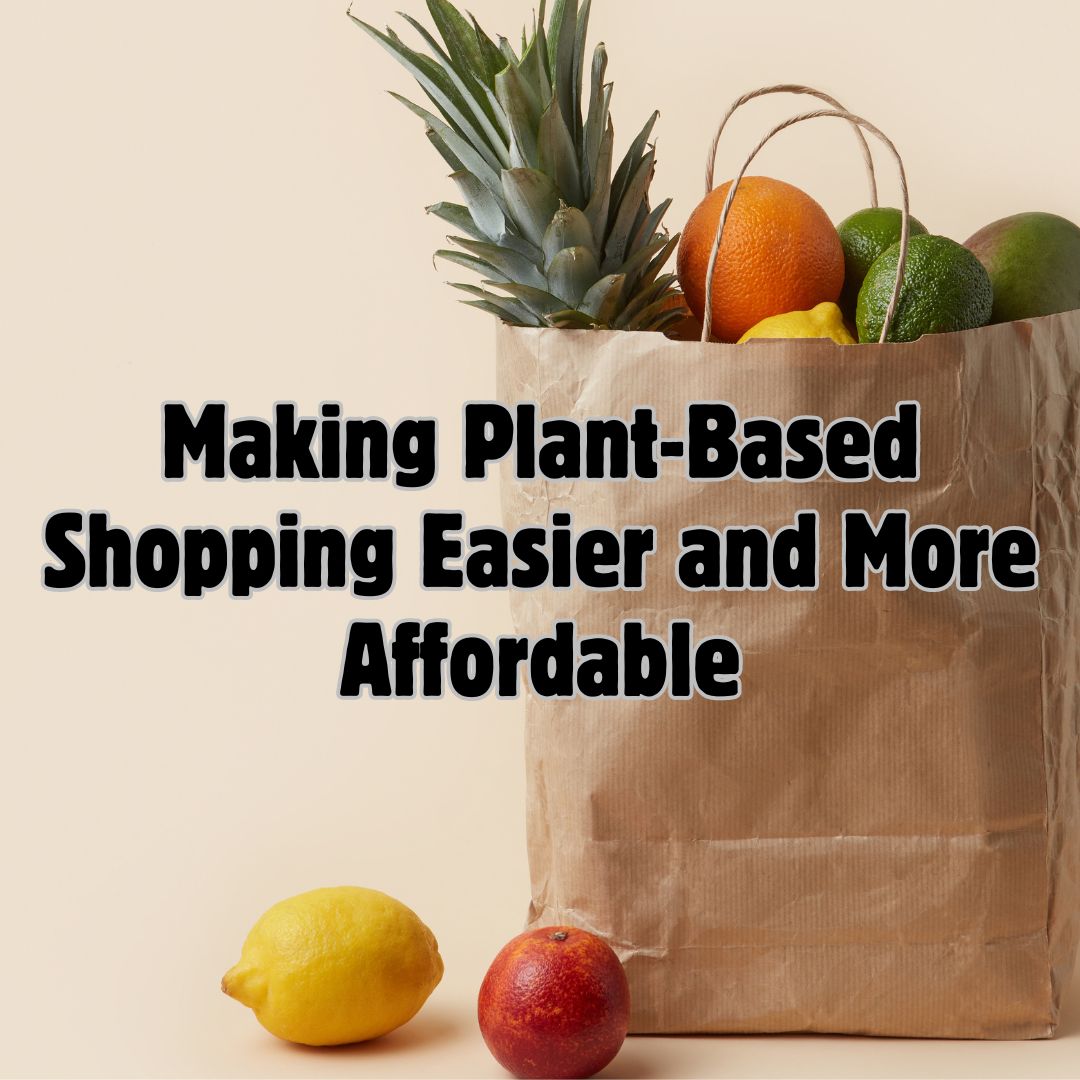Plant-based grocery shopping doesn’t have to be stressful, expensive, or time-consuming. Whether you’re brand new to plant-based eating or simply trying to shop smarter, there are simple ways to make your weekly routine easier, without breaking your budget.
With food prices continuing to rise, grocery bills have become a real source of stress for many households. It can feel like the cost of healthy choices is always going up. But with a few strategies and helpful habits, you can make plant-based eating work within your budget while still enjoying fresh, satisfying meals. It’s all about planning ahead, knowing your staples, and staying flexible.
These tips are designed to help make plant-based grocery shopping more affordable and more organized, so your food lasts longer, your time in the store is more efficient, and nothing gets forgotten or wasted.
Make a Simple Plan Before You Shop
Planning out just a few meals for the week, especially dinners, can make a big difference. Choose recipes that use overlapping ingredients to reduce waste and stretch your grocery dollars.
For example, leafy greens like spinach can be used in stir-fries, wraps, smoothies, or soups. Chickpeas might become part of a salad one day and a warm curry the next. Planning this way helps you get the most out of what you buy while keeping your meals exciting.
Take Inventory of What You Already Have
Before heading to the store, check your pantry, fridge, and freezer. It’s easy to forget what’s already there, especially when staples get tucked behind other items.
This step helps prevent duplicate purchases and can even inspire last-minute meal ideas that don’t require much shopping at all. A few cans of beans, a bag of rice, or frozen veggies can go a long way toward building out your weekly meals.
Shop Smarter With Plant-Based Grocery Shopping Strategies
Where you shop matters. Different stores offer different strengths – from bulk bins to store-brand organics, local produce to discount shelves. Shopping at the right places can dramatically reduce your plant-based grocery shopping costs.
For a deeper look at how to choose stores based on your needs and budget, check out this guide to PLANT-BASED SHOPPING STRATEGIES. It breaks down what to look for at each type of store and how to create a smart, flexible shopping routine that fits your lifestyle.
Check Store Flyers and Digital Deals
Taking five minutes to look through weekly store flyers or grocery apps can lead to serious savings. If you find a great deal on produce, grains, or pantry items, you can adjust your plan and stock up where it makes sense.
Digital coupons, loyalty rewards, and markdowns on store-brand goods can make a noticeable difference in your plant-based grocery shopping budget, especially if you’re feeding a family.
Buy in Bulk (When It Makes Sense)
Buying in bulk can be an excellent way to save, especially when it comes to shelf-stable plant-based staples like oats, beans, lentils, and brown rice. Bulk bins allow you to buy only what you need, and they often cost less per ounce than pre-packaged items.
Even if bulk isn’t available, purchasing larger bags of grains or frozen items you regularly use can still help reduce costs over time.
Keep Frozen Produce on Hand
Frozen vegetables and fruits are an affordable, convenient option for plant-based meals. They’re picked and frozen at peak ripeness, locking in flavor and nutrients – and they last much longer than fresh produce.
Keep freezer staples like spinach, broccoli, mixed berries, or corn available for last-minute meals, smoothies, or side dishes. They’re especially helpful when fresh produce is out of season or too expensive.
Stock Your Pantry With Affordable Plant-Based Staples
Having a few versatile staples on hand makes plant-based grocery shopping easier and reduces the number of items you need to buy each week. Some go-to options include:
- Canned beans and tomatoes
- Grains like brown rice, quinoa, and oats
- Plant-based milk
- Peanut butter or almond butter
- Shelf-stable sauces or condiments
You can find a complete beginner-friendly list of PLANT-BASED STAPLES here.
Prioritize What Needs to Be Used First
Once your groceries are unpacked, use fresh produce and other perishable items early in the week. Then shift to shelf-stable or frozen ingredients later. This simple habit helps reduce waste and ensures nothing goes bad before you get to it.
Prepping ingredients ahead of time—like chopping veggies or washing greens—can make them easier to grab during the week and increases the odds you’ll actually use them.
Put it into action: Explore a One-Week Plant-Based Budget Meal Plan
If you’re looking for inspiration to put your grocery list into action, this ONE-WEEK PLANT-BASED BUDGET MEAL PLAN from Forks Over Knives offers a full week of affordable, delicious meals using simple ingredients. It’s a great example of how plant-based grocery shopping can be both practical and satisfying, even on a tight budget. The plan includes recipes and a grocery list to help take the guesswork out of your week.
Make Your Plant-Based Grocery Shopping Routine Work for You
With food prices at historic highs, getting organized can make plant-based grocery shopping more manageable and more affordable. A little planning goes a long way—whether it’s checking what you already have, shopping for overlap, or knowing which stores offer the best value.
You don’t need to overhaul everything at once. Start with a few changes that fit your lifestyle. Small adjustments can lead to big savings, more balanced meals, and a grocery routine that finally feels doable.






